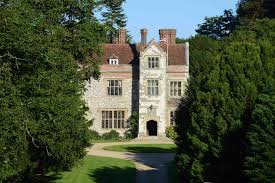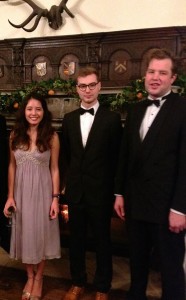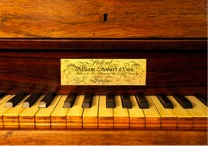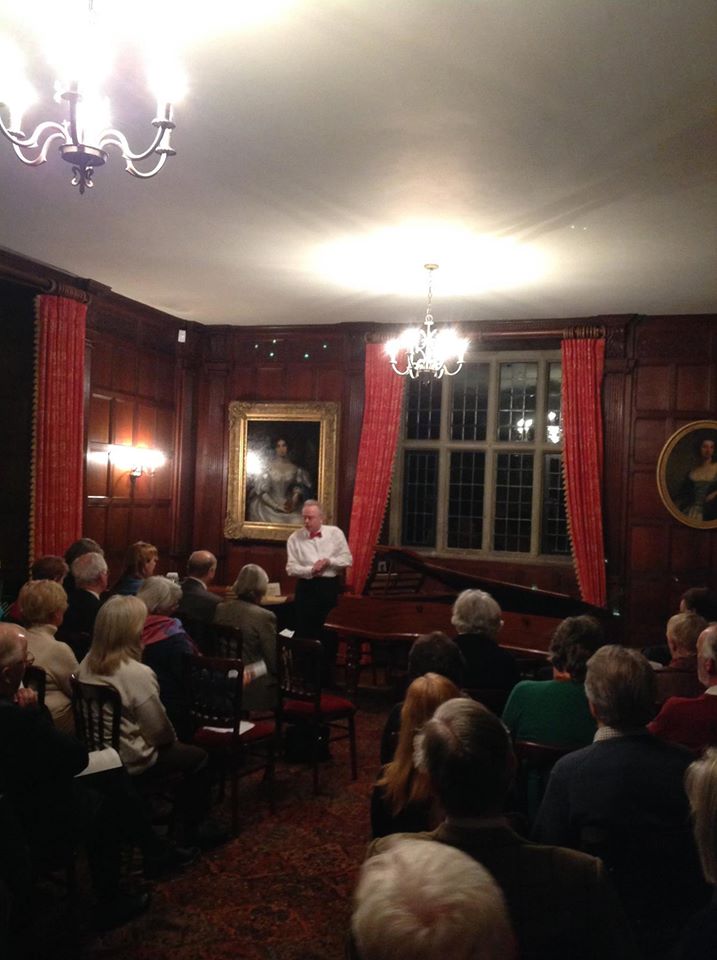Cramer at Chawton


Pianist Harry Matthews (year 2) tells us about the most recent Music department concert at Chawton House Library:
Last Tuesday, I went with Professor David Owen Norris, Laurence McNaughton and Manikka Marchant to provide a night of Georgian piano music at Chawton House Library.
The concert was performed on an early 19th-century Stodart Patent Compensating Grand piano. The piano, brought to Chawton House by David and the Music department, has been recently restored thanks to a generous donation from the North American friends of Chawton House Library.
The evening’s programme featured the music of J. B. Cramer, the only composer mentioned in Jane Austen’s novels. A concert that reflected in his music in Chawton House – the house of Jane Austen’s brother Edward Austen Knight – was deemed most appropriate. Cramer’s music was celebrated in the evening’s concert in a setting that would have seen his music being performed by Austen herself, not long after its time of composition. Cramer was an English composer born in 1771 in Mannheim, Germany, before being raised in London. Laurence, Manikka and myself all performed studies from his Studio per il pianoforte (London, 1804), which is perhaps the earliest set of specialist piano etudes. David Owen Norris performed two of Cramer’s sonatas, one of which subtly paid homage to the famous Pathètique Sonata by Ludwig van Beethoven; a significant contemporary to Cramer’s music.
 My particular etude (No. 7) addressed the technique of balanced legato playing while voicing a melody over arpeggios. The piece demanded an accurate left hand with large jumps that should appear smooth without shifting more weight onto the little finger. To achieve this I needed to use a smooth arch motion in the left arm to generate disciplined, precise motion without stopping the arm.
My particular etude (No. 7) addressed the technique of balanced legato playing while voicing a melody over arpeggios. The piece demanded an accurate left hand with large jumps that should appear smooth without shifting more weight onto the little finger. To achieve this I needed to use a smooth arch motion in the left arm to generate disciplined, precise motion without stopping the arm.
It was a very special experience to able to perform on a piano steeped in historic value, while playing music in the environment it was composed for. We can presume that the Stodart piano would have been very similar to the type of piano Cramer himself would have composed on. Although it provides a very different playing experience for those used to modern pianos, it allows you as a performer to develop a greater understanding of the composer’s intentions, as well as an idea of the performance practice required for an instrument that we are not accustomed to using.
The concert was well received, with David Owen Norris not only performing, but addressing the instrument itself and how it differed, particularly in terms of its sound production, from its modern counterparts. A particular focus of the evening was the instrument’s small lid prop; on modern pianos the lid prop would be much larger. Bu we demonstrated in the concert that the prop size suited the balance and tone of the piano most extraordinarily. David changed the height of the lid at different parts of Manikka’s etude, and it was concluded by both performers and audience that the height of the lid prop perfectly suited both the piano and size of the room. I personally enjoyed the piano’s sound when I was sat in the middle of the room and the lid prop was erected, the delicacy of sound produced allowed me as a listener to completely admire the beautiful works of Cramer.

The collaboration between the University of Southampton and Chawton House Library is fast becoming an important relationship between heritage and academia. We hope that many more concerts will be played at Chawton House and they are all as successful as this one.

